
|
|
|
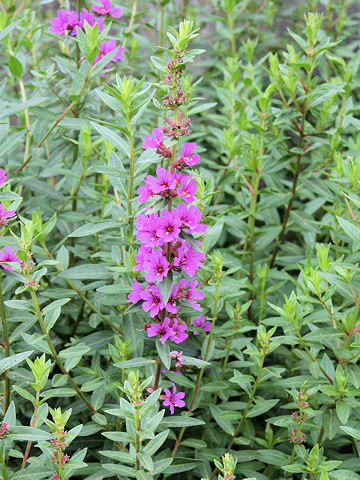 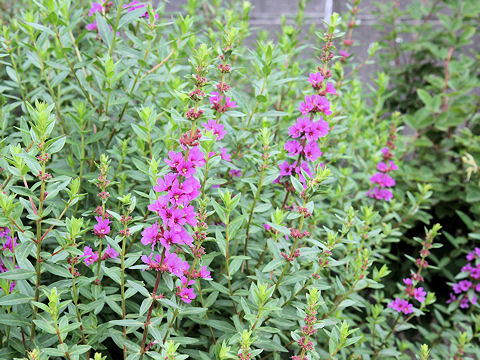 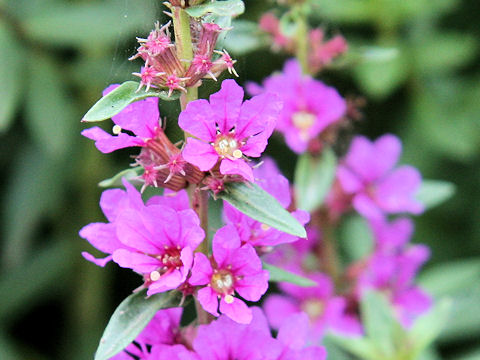 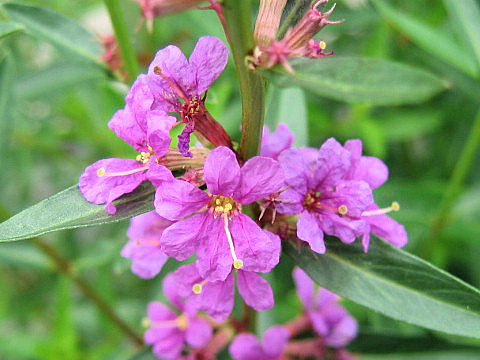 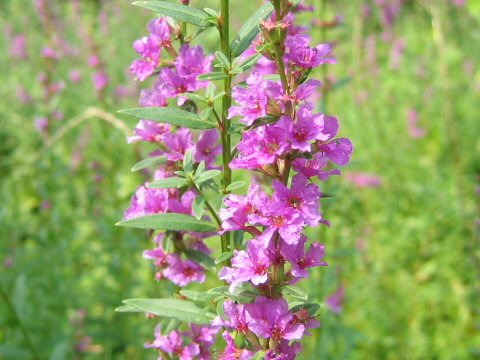  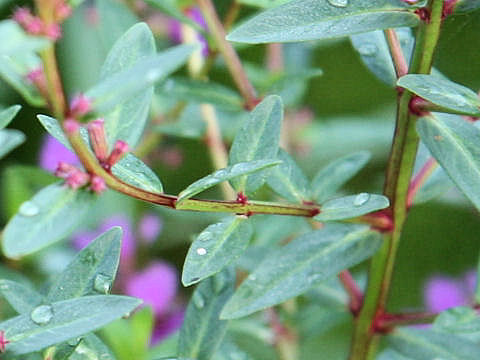 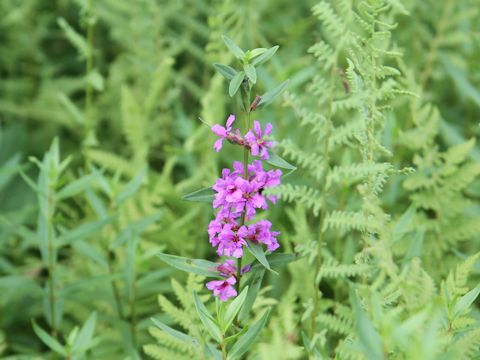 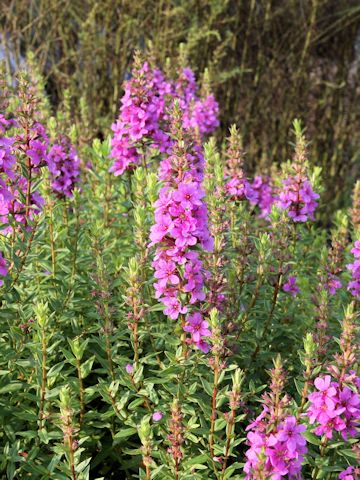  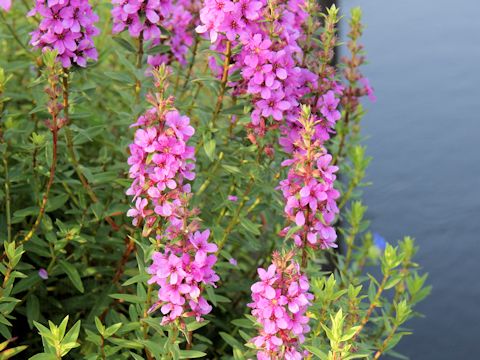 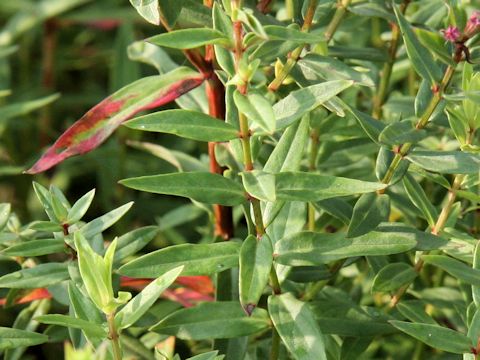  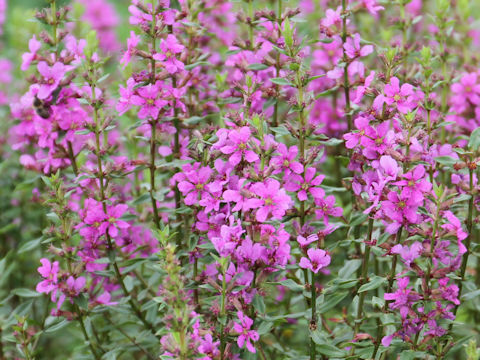 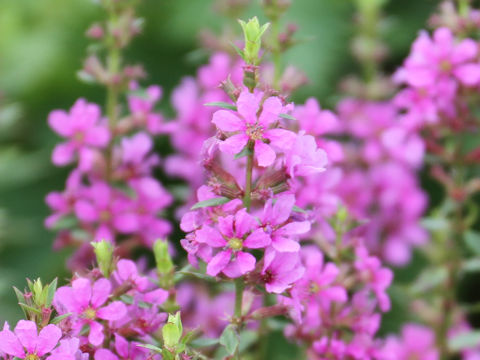  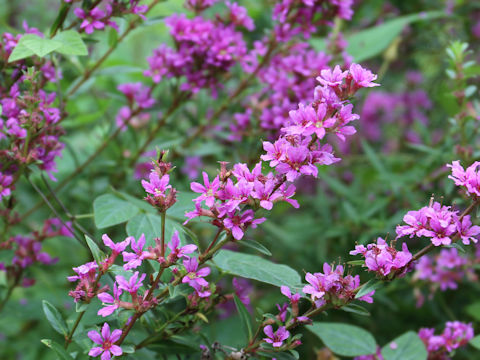 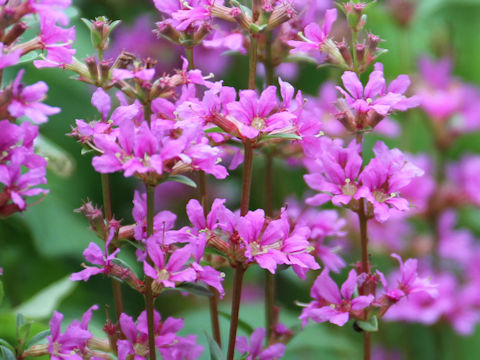   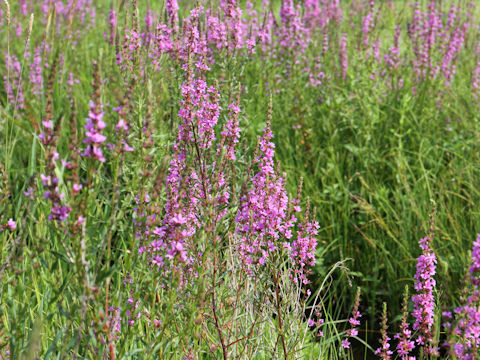  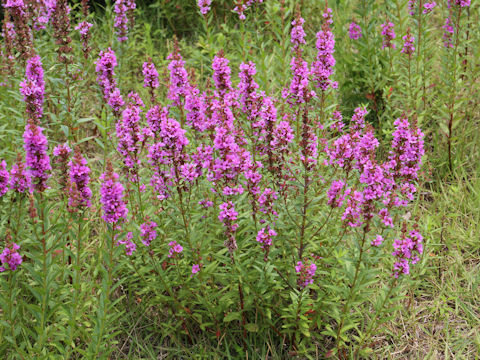   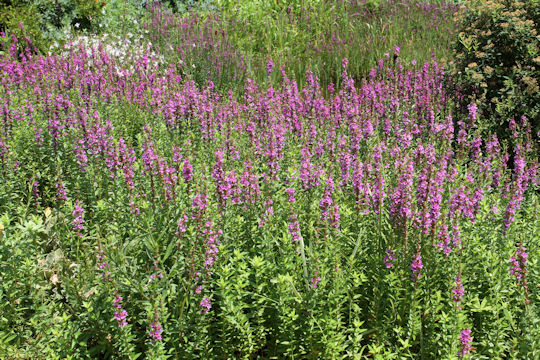 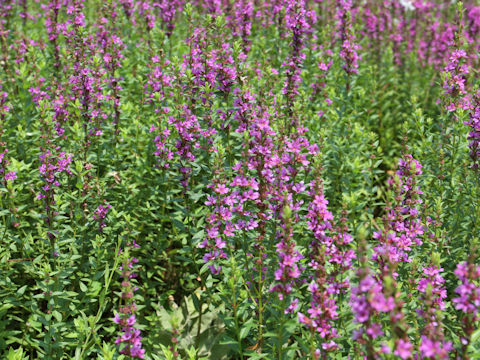 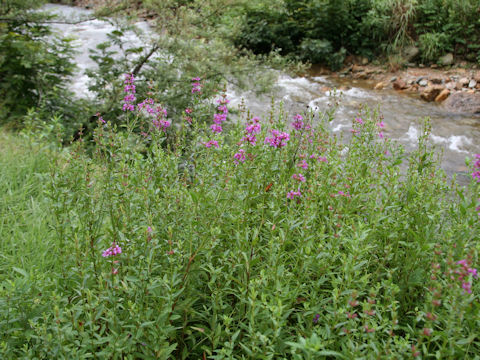 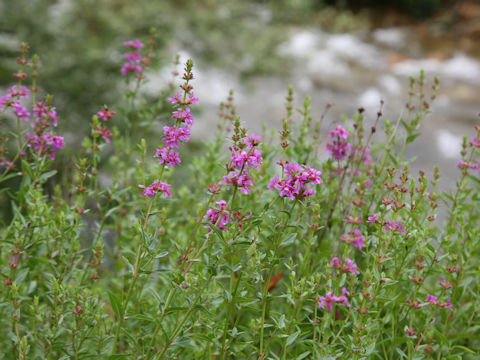 |
|
|
|
わが国の各地をはじめ、朝鮮半島に分布しています。沼地や田んぼの畔などの湿ったところに生え、高さは50〜100センチになります。葉は披針形で、規則正しく十字に対生します。ちょうど旧暦のお盆の頃に咲き、仏前に供えられるので「ぼんばな(盆花)」とも呼ばれます。和名の語源は「みそぎはぎ(禊萩)」あるいは「みぞはぎ(溝萩)」ですが、大阪では今でも「みぞはぎ」と呼んでいます。 |
|
|
ミソハギ科ミソハギ属の多年草で、学名は Lythrum anceps。英名はありません。 |
|
|
"Miso-hagi" (Lythrum anceps) belongs to Lythraceae (the Loosestrife family). It is a perennial herb that is native all over Japan and the Korean Peninsula. This herb grows in marshes and rice field linches, and it can reach 50-100 cm in height. The leaves are lanceolate and decussate. The spikes are borne on the apices and bloom magenta flowers from July to August. It blooms just around the time of the Obon in the lunar calendar and is offered in front of the Buddhist altar, so it is also called "Bon-bana". The etymology of the Japanese name is "Misogi-hagi" or "Mizo-hagi", but in Osaka it is still called "Mizo-hagi". |
|
|
[上・中1〜2] 千葉県東庄町笹川にて、2008年07月20日撮影。 [中3] 大阪府交野市「大阪市大付属植物園」にて、2005年07月07日撮影。 [中4] 大阪府四條畷市田原台「えびす公園」にて、2004年08月13日撮影。 [中5・中6] 大阪府四條畷市清滝中町にて、2006年07月15日撮影。 [中7] 栃木県日光市中三依「湿生園」にて、2013年08月24日撮影。 [中8〜中11] 千葉県香取市久保にて、2011年08月08日撮影。 [中12〜中14] 同上にて、2016年08月09日撮影。 [中15〜中17] 山形県小国町小玉川にて、2016年08月15日撮影。 [中27・下] 同上にて、2021年08月15日撮影。 [中18〜中20] 岩手県雫石町「小岩井牧場まきば園」にて、2017年07月21日撮影。 [中21〜中23] 福島県いわき市「アクアマリンふくしま」にて、2017年07月22日撮影。 [中24〜中26] 愛知県名古屋市港区「ブルーボネット」にて、2017年08月03日撮影。 |

|
|
Shu Suehiro |